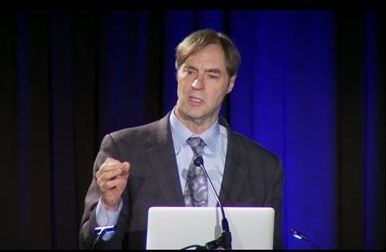|
Word Gems
exploring self-realization, sacred personhood, and full humanity
Dr. Stephen C. Meyer's
Scientific Evidence For A Creator
|
logic of design detection
|
return to 'scientific evidence' main-page
 |
| Dr. Stephen C. Meyer |
quoted from Dr. Meyer's writing, Scientic Evidence for a Creator
IN THE DESIGN INFERENCE,
mathematician William Dembski explicates
the logic of design detection. His work
reinforces the conclusion that the specified
information present in DNA points to a
designing mind.
Dembski shows that rational agents often
detect the prior activity of other designing
minds by the character of the effects they
leave behind.
Archaeologists assume that rational
agents produced the inscriptions on the
Rosetta Stone. Insurance fraud investigators
detect certain “cheating patterns” that suggest
intentional manipulation of circumstances
rather than a natural disaster. Cryptographers
distinguish between random signals and those
carrying encoded messages, the latter
indicating an intelligent source.
Recognizing the activity of intelligent
agents constitutes a common and fully
rational mode of inference.
More importantly, Dembski explicates
criteria by which rational agents recognize or
detect the effects of other rational agents and
distinguish them from the effects of natural
causes. He demonstrates that systems or
sequences with the joint properties of “high
complexity” (or small probability) and “speci-
fication” invariably result from intelligent
causes, not from chance or physical-chemical
laws.
Dembski notes that complex sequences
exhibit an irregular and improbable arrange-
ment that defies expression by a simple rule
or algorithm, whereas specification involves a
match or correspondence between a physical
system or sequence and an independently rec-
ognizable pattern or set of functional requirements.
By way of illustration, consider the following three sets of symbols:
1. nehya53nslbyw1`jejns7eopslanm46/J
2. TIME AND TIDE WAIT FOR NO MAN
3. ABABABABABABABABABABAB
The first two sequences are complex be-
cause both defy reduction to a simple rule.
Each represents a highly irregular, aperiodic,
improbable sequence. The third sequence is
not complex, but is instead highly ordered
and repetitive. Of the two complex sequences,
only the second, however, exemplifies a set of
independent functional requirements—i.e., it
is specified.
English has many such functional require-
ments. For example, to convey meaning in
English, one must employ existing conven-
tions of vocabulary (associations of symbol
sequences with particular objects, concepts, or
ideas) and existing conventions of syntax and
grammar. When symbol arrangements
“match” existing vocabulary and grammatical
conventions (i.e., functional requirements),
communication can occur.
Such arrangements exhibit “specification.”
The sequence “Time and tide waits for no
man” clearly exhibits such a match, and thus
performs a communication function.
Thus, of the three sequences, only the sec-
ond manifests both necessary indicators of a
designed system. The third sequence lacks
complexity, though it does exhibit a simple
periodic pattern, a specification of sorts. The
first sequence is complex, but not specified.
Only the second sequence exhibits both com-
plexity and specification.
Thus, according to Dembski’s theory of design detection, only
the second sequence implicates an intelligent
cause—as our uniform experience affirms.
In my book Signature in the Cell, I show
that Dembski’s joint criteria of complexity
and specification are equivalent to “func-
tional” or “specified information.” I also show
that the coding regions of DNA exemplify
both high complexity and specification and,
thus not surprisingly, also contain “specified
information.”
Consequently, Dembski’s scien-
tific method of design detection reinforces the
conclusion that the digital information in
DNA indicates prior intelligent activity.
So, contrary to media reports, the theory
of intelligent design is not based upon igno-
rance or gaps in our knowledge, but on scien-
tific discoveries about DNA and on established
scientific methods of reasoning in which our uniform
experience of cause and effect guides our inferences about the kinds of causes that produce (or best explain) different types of
events or sequences.
|
